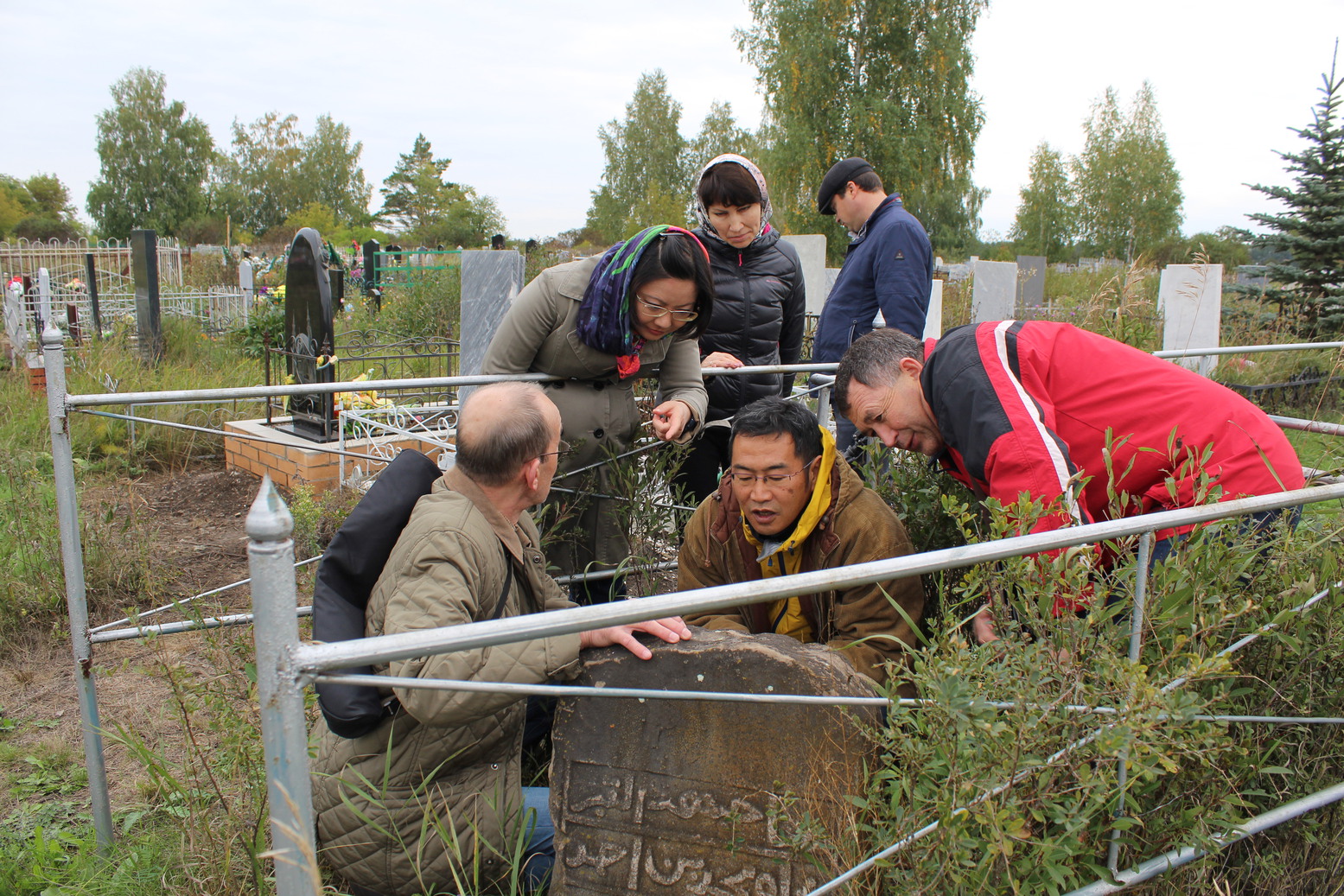An Islamic Sacred Site and Epitaphs in the Southern Urals

This image database offers pictures of headstones and epitaphs in the “Ak-zirat” cemetery, containing the mausoleum of Huseyn-Bek, and located in the raion of Chishmy, which lies about 55 km west of the city of Ufa, Bashkortostan, Russia. It contains pictures taken during a preliminary research visit on September 7, 2019 as well as pictures of the epitaphs photographed on the following day, September 8.
Sedentary Muslims and their communities in Central Asia have been studied by scholars of the humanities, and a great many studies have been accumulated of Central Asian Muslims’ faith in Islamic saints (sufis) and of their mausoleums. In fact, Islamic mysticism (Sufism) has occupied an important position in people’s religious life there. However, veneration of Islamic saints and pilgrimages to Islamic sacred places in the Russian Muslim regions, especially in the Volga-Ural region, have not been sufficiently studied, although Muslims in the region have had close cultural ties with their coreligionists in Central Asia. Those religious practices have very seldom been recorded. This image database thus has two major aims: first, to offer research materials for historical and religious studies of the veneration of Islamic saints and pilgrimages to Islamic sacred places, philological studies of epitaphs, and archaeological studies of burials in the Volga-Ural region that indicate the extent of Islamic culture; and second, to preserve a record of the place, which continues to evolve as a living place of pilgrimage.
Participants in the exploration on September 7-8, 2019 were IMAMATSU Yasushi (Graduate School of Asian and African Area Studies, Kyoto University, Japan, in March 2022), ISOGAI Masumi (Faculty of Letters, Chiba University; Center for Northeast Asian Studies, Tohoku University, Japan, in March 2022), Marsil N. FARKHSHATOV, Ramil M. BULGAKOV (Order of the Badge of Honour, Institute of History, Language and Literature, Ufa Federal Research Centre, Russian Academy of Sciences), and Evgenii V. RUSLANOV (Division of Archaeological Heritage, Department of Cultural Heritage Protection, Republic of Bashkortostan, Russian Federation). Tatʹiana K. SURINA, a scientific photographer, photographed the epitaphs. The exploration and the publication of this image database were supported by JSPS KAKENHI Grant Number JP 19K01033



